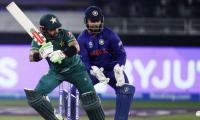LAHORE: The Institute for Policy Reforms (IPR) Annual Review of the Economy 2016-17 on Tuesday revealed all the consolidated figures of the economic targets set last fiscal year, except inflation.
Though there are signs of revival in FY18, as seen in several areas, including the Federal Board of Revenue (FBR) first quarter growth of 21 percent, export revival, continued growth in private credit, and energy supply, the economy’s weak fundamentals suggest these gains might be short lived.
The IPR reviewed the macro-economic indicators as a major cause of concern with external vulnerability especially alarming. Current account deficit was $12.1 billion, four percent of the GDP, it added. In June 2017, reserves were less than four months import. Since then, reserves have declined further while imports have grown.
In 2016-17, foreign exchange drawdown was $2 billion, while external debt grew by $9.1 billion. Of this, government external debt grew by $4.7 billion, and in turn $4.2 billion of which was market rate borrowings.
In 2016-17, Pakistan paid $8.15 billion in interest and principal or 53 percent more than in 2015-16. Total government debt servicing was $6.3 billion, the review said.
Pakistan’s ambitious investment plans entail large balance of payments outflows in the medium term. There is no known government plan on how this will be met. The report also highlights other macroeconomic weaknesses. Overall fiscal deficit was 5.8 percent of GDP against government’s target of 3.8 percent. Both primary and revenue balance were negative.
After two years of double digit decline, exports fell by another 1.6 percent in 2016-17. They have revived since March 2017. The revival partly results from major fiscal incentives granted in January 2017 and again recently. There is no sign of improvement in competitiveness or export of value-added products.
The report reiterates that given the extent of imbalances, the economy needs fundamental reforms. To grow, the economy needs higher savings and investment. In 2016-17, national savings declined to 13 percent of GDP. Investment was 15.8 percent, while the savings deficit was met from external inflows.
In recent years, investment in manufacturing as a share of total private investment has declined. The sector had a share of 22.7 percent in total private investment in 2006-07. This fell to 14.1 percent in 2016-17. The IPR review said that job growth was below needs. Conservative estimates suggested that an added two million young people enter the job market each year, and decent jobs were the need of the time.
Farrukh H Sabzwari addresses an event at Central Depository Company of Pakistan in this undated photo. —...
Women inspecting pink salt stacks at Pakistan's stall in World Expo 2025. —Instagram@pakatworldexpo/FileKARACHI:...
A representational image of gold bangles. — AFP/FileKARACHI: Gold prices increased by Rs600 per tola on Tuesday in...
Fiza Farhan. —Linkedin@fiza-farhan/FileKARACHI: Fiza Farhan, CEO of ORA Global Development Advisors and a leading...
US Health Secretary Robert F Kennedy Jr. visits the Osher Center for Integrative Health at the University of Utah in...
A representational image shows two men shaking hands apparently after reaching an agreement on a financial matter. —...







